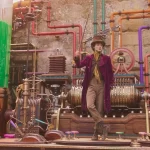TIFF 2018: The Image Book, by David Bax
Breathless is a kind of a crime film. And A Woman Is a Woman is a kind of a musical. But by the time we get to the new The Image Book, almost 60 years after Jean-Paul Belmondo and Jean Seberg smoked cigarettes and hid from the cops, a Jean-Luc Godard film is a genre unto itself. Part documentary, part collage (the clips here are from Johnny Guitar, Salo, Elephant and many, many more cuts too deep for my blood), Godard now seems intent on perverting what we think of as cinema. His curmudgeonly prankishness is obvious. Why, then, is it still so goddamn compelling?
The Image Book is divided into chapters, not that the divisions between segments are useful (especially since some chapter names and numbers inexplicably repeat). To try to parse the internal logic of the film would be a fool’s errand. Yet that doesn’t mean that it has no logic. Godard’s genius is that, no matter how haphazard his choices at first appear, what’s clear is that they are actually choices. There’s a motor driving his movies and part of the fun is that we can’t see it. Still, he doesn’t lower himself to the level of mere provocateur (even if The Image Book does indeed provoke). There may be some laughs but this is serious business, whatever it is.
All right, I’ve spent two paragraphs putting off describing the contents of the film. It’s time to get my hands dirty. That’s just how The Image Book feels sometimes, too. Not dirty in the prurient sense but in the way of digging through old things, the way your hands get grimy flipping through the stacks at a record shop. Whether old or new, his images seem worn and warped, mostly because he’s done that to them himself. Speeding things up, slowing them down, reversing the image to a negative, switching aspect ratios mid-shot; the list goes on.
More than the look of The Image Book, though, what truly stands out is the sound. He plays tricks here, too; suddenly adjusting the volume, using only the left or right channel at any given time. But he’s also using sound to guide us. The sporadically subtitled narration, read by Godard in a soothingly grumbly, NPR style, close to the mic tone, lulls us like the loud yet calming clacks and clashes of a passenger train you might nod off while riding. And then, BAM!, there’s an explosion–often a literal one–jarring us to full attention once again.
Godard’s use of auditory force is as much structuralism as it is showmanship. Force, in fact, is the watchword of The Image Book, and not just the physical kind. Time and time again, he shows us visions of what humans can achieve when working together in passionate unification. Some of these things are inspiring, like human rights protestors; some of them are terrible, like the terrorist attacks of September 11, 2001. By layering such imagery atop itself and bombarding us with it for 80 minutes, he’s reducing all of it to a flat line on the horizon, putting protest and terrorism on the same spectrum (that’s the provocative part I mentioned). Politics abound, not all of it particularly well thought out. While he condemns imperialism both at home and abroad (“Everything done in Europe is done by Europe,” reads the text), the onslaught of footage of Middle Easterners in the final stretch bears the stench of colonial otherizing. But he still insists that we are at our best when we live and act together, even if our actions sometimes include dying together.




























